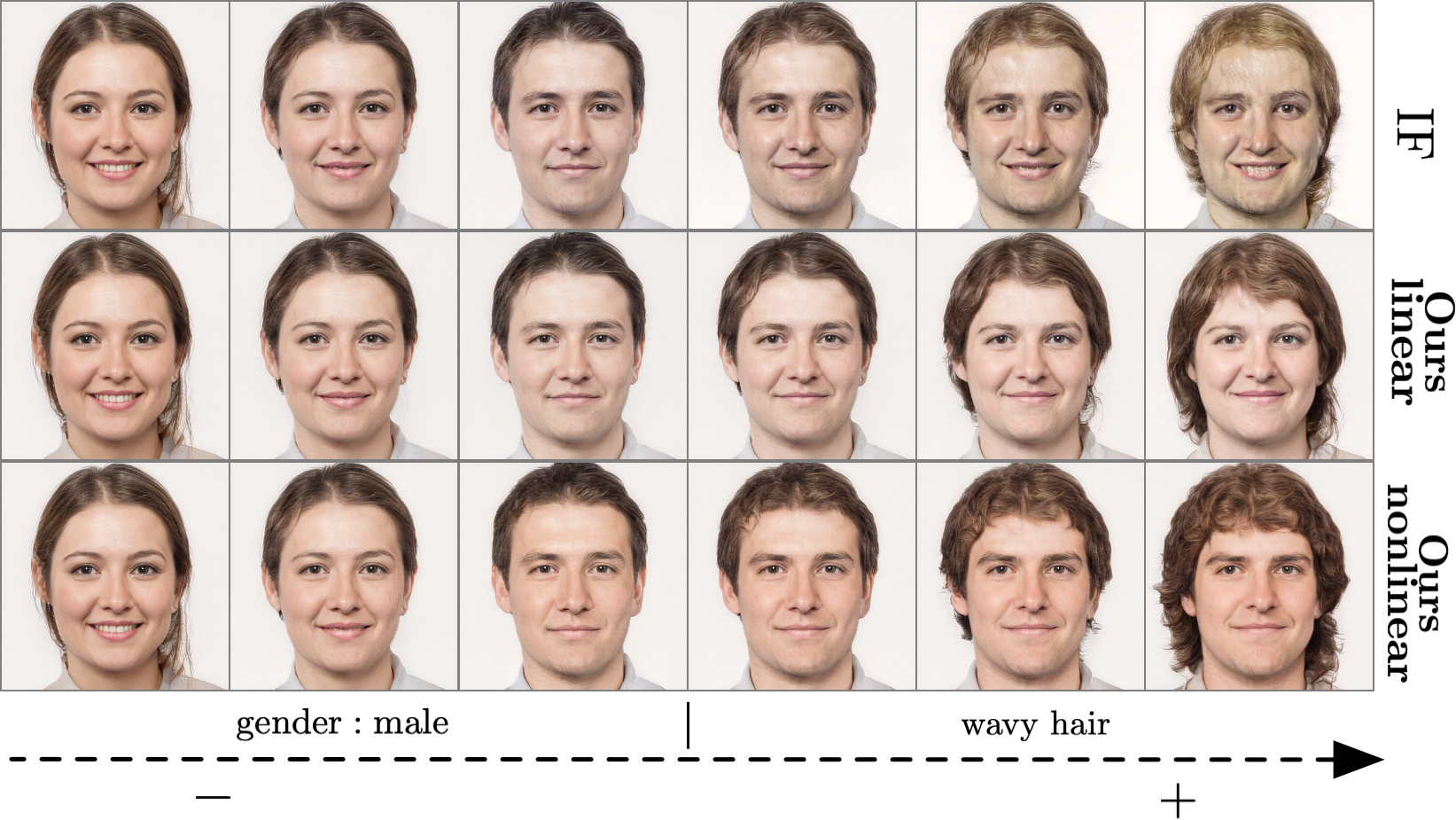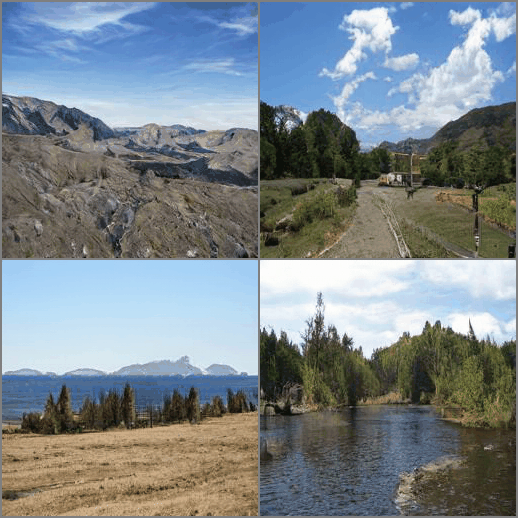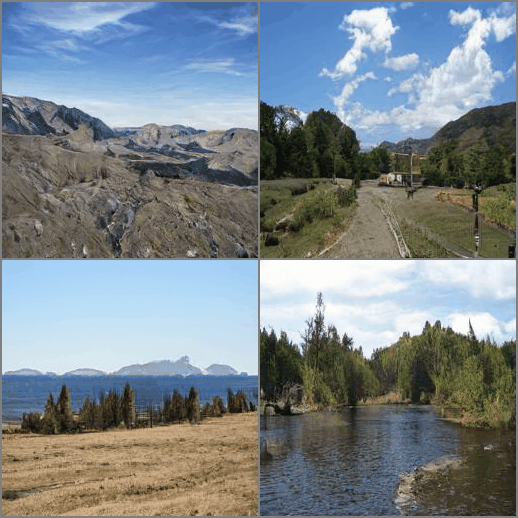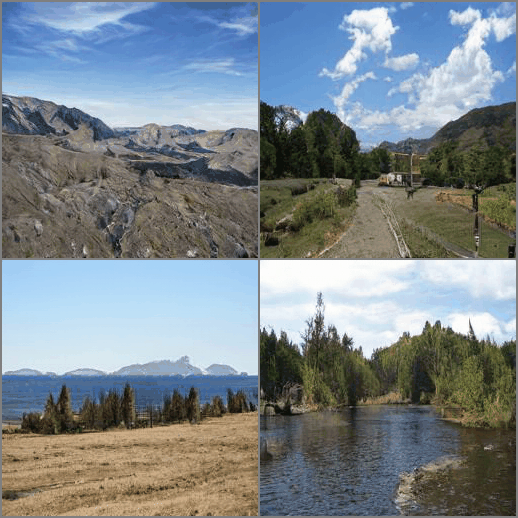 On Nonlinear Latent Transformations for GAN-based Image Editing
Valentin Khrulkov, Leyla Mirvakhabova, Ivan Oseledets, Artem Babenko
On Nonlinear Latent Transformations for GAN-based Image Editing
Valentin Khrulkov, Leyla Mirvakhabova, Ivan Oseledets, Artem Babenko
We replace linear shifts commonly used for image editing with a flow of a trainable Neural ODE in the latent space.
w' = NN(w; \theta)
The RHS of this Neural ODE is trained end-to-end using pre-trained attribute regressors by enforcing
- change of the desired attribute;
- invariance of remaining attributes.
Data required to use the code is available at this dropbox link (2.5Gb).
| Path | Description |
|---|---|
| data | data hosted on Dropbox |
├ models |
pretrained GAN models and attribute regressors |
├ log |
pretrained nonlinear edits (Neural ODEs of depth 1) for a variety of attributes on CUB, FFHQ, Places2 |
├ data_to_rectify |
100,000 precomputed pairs (w, R[G[w]]); i.e., style vectors and corresponding semantic attributes |
├ configs |
parameters of StyleGAN 2 generators for each dataset (n_mlp, channel_width, etc) |
└ inverses |
precomputed inverses (elements of W-plus) for sample FFHQ images |
To download and unpack the data run get_data.sh.
We used torch 1.7 for training; however, the code should work for lower versions as well.
An example training script to rectify all the attributes:
CUDA_VISIBLE_DEVICES=0 python train_ode.py --dataset ffhq \
--nb-iter 5000 \
--alpha 8 \
--depth 1For selected attributes:
CUDA_VISIBLE_DEVICES=0 python train_ode.py --dataset ffhq \
--nb-iter 5000 \
--alpha 8 \
--dir 4 8 15 16 23 32 \
--depth 1For training on a custom dataset, you have to provide
- Generator and attribute regressor weights
- a dictionary
{dataset}_all.pt(stored indata_to_rectify). It has the form{"ws": ws, "labels" : labels}withwsbeing atorch.Tensorof size N x 512 andlabelsis atorch.Tensorof size N x D, with D being the number of semantic factors.labelsshould be constructed by evaluating the corresponding attribute regressor on synthetic imagesgenerator(ws[i]). It is used to sample batches for training.
Please see explore.ipynb for example visualizations.
lib.utils.py contains a utility wrapper useful for building and loading the Neural ODE models (FlowFactory).
import torch
from lib.utils import FlowFactory, LatentFlow
from torchdiffeq import odeint_adjoint as odeint
device = torch.device("cuda")
flow_factory = FlowFactory(dataset="ffhq", device=device)
odeblock = flow_factory._build_odeblock(depth=1)
# depth = -1 corresponds to a constant right hand side (w' = c)
# depth >= 1 corresponds to an MLP with depth layers
odeblock.load_state_dict(...)
# some style vector (generator.style(z))
w0 = ...
# You can directly call odeint
with torch.no_grad():
odeint(odeblock.odefunc, w0, torch.FloatTensor([0, 1]).to(device))
# Or utilize the wrapper
flow = LatentFlow(odefunc=odeblock.odefunc, device=device, name="Bald")
flow.flow(w=w0, t=1)
# To flow real images:
w = torch.load("inverses/actors.pt").to(device)
flow.flow(w, t=6, truncate_real=6)
# truncate_real specifies which portion of a W-plus vector to modify
# (e.g., first 6 our of 14 vectors)A sample script to generate a movie is
CUDA_VISIBLE_DEVICES=0 python make_movie.py --attribute Bald --dataset ffhq| Bald | Goatee | Wavy_Hair | Arched_Eyebrows |
|---|---|---|---|
 |
 |
 |
 |
| Bangs | Young | Blond_Hair | Chubby |
|---|---|---|---|
 |
 |
 |
 |
| lush | rugged | fog |
|---|---|---|
 |
 |
 |
Coming soon.